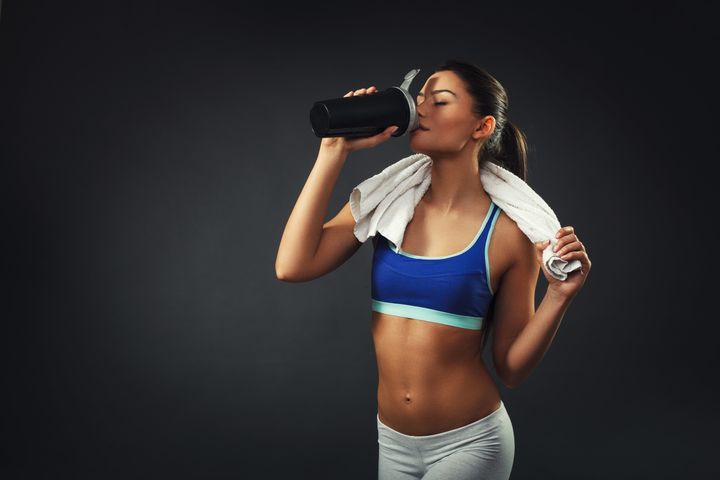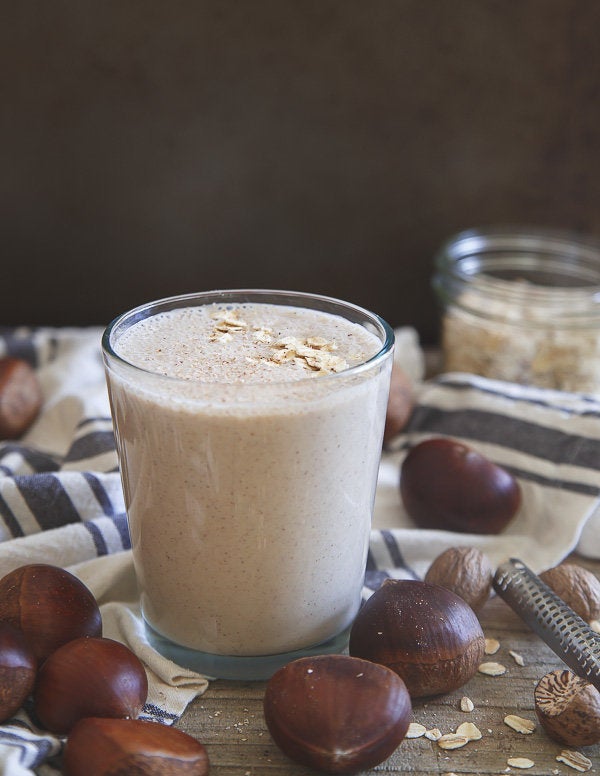Adding protein to your diet is essential if you frequently work out, but it’s so often associated with bulky males drinking shakes in the gym.
Now though, more than ever, women are including shakes and increased protein as part of their diet to ensure their body is fuelled to workout.
Karen Cummings-Palmer, nutrition consultant for STRIPPD protein, has seen a huge increase in women using protein powders over the past few years.
“Women are more aware than ever before of the benefits of a high protein diet and how important it is to actually develop their muscles,” she told HuffPost UK.
“We’re starting to wake up to the benefits of weight-lifting and feeding our muscles – not bulking up just toning and developing our strength.”

To put it simply, the more you train, the more protein you need because resistance training and endurance workouts rapidly break down muscle protein.
Pollyanna Hale, 33, incorporated more protein into her diet four years ago when she upped her workouts. As well as having protein shakes, she added protein powder to snacks such as her oats.
She’d previously been put off by the marketing of protein powders (”They often come in huge macho looking tubs with bodybuilders on the outside!”), but educated herself on how they could benefit her.
“The ‘strong not skinny’ movement has definitely fuelled women’s desire to strength train which I think is great as it’s so good for both physical mental health and confidence,” she told HuffPost UK.
“Women are becoming more educated that good nutrition is equally important, and protein shakes can be part of a good healthy diet.”

Steph Roberts, 30, has been taking protein before and after workouts to supply her with energy since she started training at 16. When she doesn’t have a shake, she finds herself deprived of protein, which affects her training levels.
“I take them first thing in the morning religiously as that is when our bodies crave quick-fire nutrition releases and also I am always in a rush,” she said.
“I then take a 100% protein shake after my workout to speed up the rate the protein affects the workout I have endured.”
Roberts said protein powder companies used to just target aspiring athletes or really dedicated gym trainers who are male, but now there are female-branded items.
“By aiming their protein shakes to recreational users and females has led to a surge in their growth, which in turn has led to more girls using the supplements to achieve the results they want,” she said.
Keen to get started? Here’s our guide to taking protein during workouts.
Back to basics: What is protein?
Protein is a nutrient made up of amino acids. Amino acids are like LEGO blocks - “essentially the building blocks for life”, explained Amanda Byram, founder of Ellement Protein for women.
They are necessary to build lean muscle strong hair, good skin and nails, collagen production and also helps to boost energy and immune function.
“The reason protein gets a lot of attention in the fitness world is that it’s responsible for building lean muscle,” said Byram. “There are 20 amino acids that are that the body needs for growth and 12 of them can be made by the human body (these are called non-essential).
“The other eight are called essential amino acids meaning they must be supplied by food and/or supplements.”
In terms of the protein we have in our diets, Jonathon Lomax, founder of Lomax Gym, said not all protein sources are equal. There are complete protein sources (meat, dairy fish) and plant-based proteins (pea, hemp brown rice), which are considered “incomplete” proteins.
It may sound confusing, but as Lomax said: “Suffice to say you need to eat a wide range of protein-containing foods in order to get the optimum balance of amino acids, eating both animal and plant-based sources, or making sure your days food contains the right mix to make sure you cover all the bases.”

So what are the benefits of having protein before or after workouts?
“It means that if you don’t supply your body with the essential amino acids it needs, your body may be limited in the amount of protein it can use to build muscle,” said Byram.
“More specifically, protein plays a specific role in muscle metabolism - basically building and maintenance.”
Byram said it’s best to see muscles as big chunks of protein and water. When we get thirsty, we drink water. So think of it as when our muscles are “thirsty”, there are foods they need to keep them working.
As well as this, protein keeps you fuller for longer, so a protein shake will not only help your muscles recover, but keep the hunger at bay until lunch.
“In a nutshell, you need to eat protein to get leaner,” she added. “If you don’t eat enough protein, you muscles will get thirsty and shrink and that gives the fat a chance to build up because you become less efficient at burning calories.”
How much protein do I need?
“How much protein you need will depend on your activity level,” explained Lomax. “This is not only how active you are in daily life, but also the extra activity you do in the form of exercise.”
The general rule of thumb is anywhere between 1.6 grams - 2.2 grams of protein per kilo of body weight. Women should aim to have between 15 - 20g of protein per meal on average.
And there’s even a guide to calculate protein needs: Get your weight in kilograms, then multiply that number by 0.8 (not very active), 1.3 (active or pregnant), or 1.8-2.2 (extremely active).
Byram explained: “I weigh 63 kilos and I weight-train four to five times a week and do some cardio also. When I multiply my weight by 2.2 I get 139g. So my protein intake is anywhere between 20-28 grams per meal, per day.”
Using protein supplements to increase the supply of amino acids to muscles is often done in a shake or smoothie, however you can also use powders to increase the protein value of other meals such as breakfast, such as porridge or pancakes.
Want to learn more? Speaking to a sports nutritionist or personal trainer is your best bet in understanding if you’re having enough protein in your own diet.
